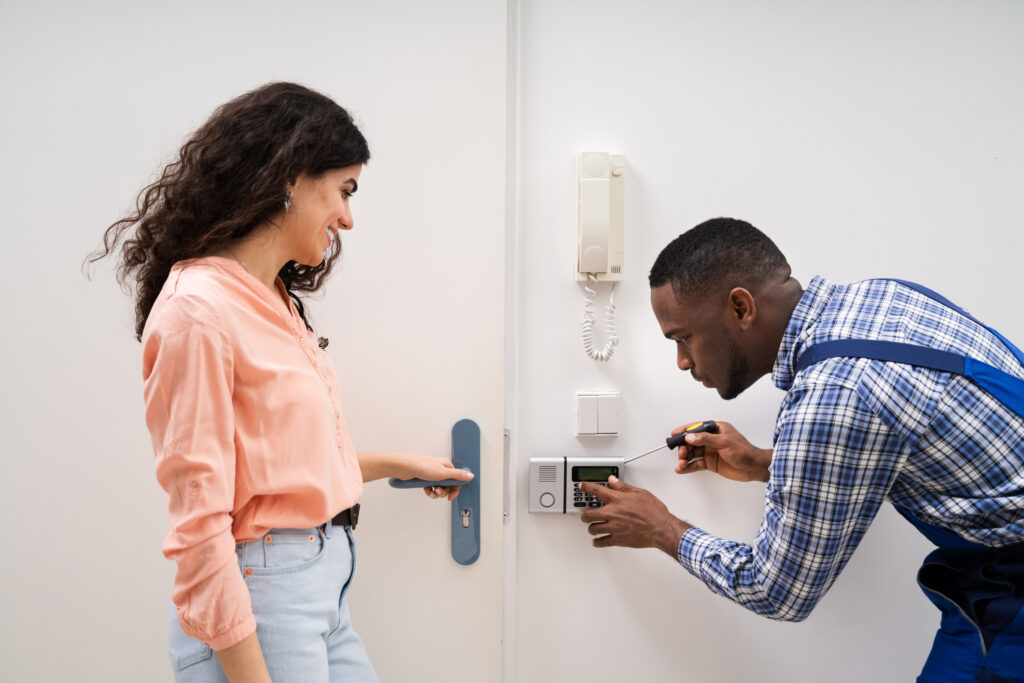How to Improve Security for Your Garage Door
A garage door is one of the largest moving parts in a home and often the most overlooked entry point. Improving security here protects vehicles, tools, storage, and even the route into your home through an interior door. This guide explains practical upgrades, smart technologies, and everyday habits that reduce risk while keeping daily life convenient. You will find checklists, hardware suggestions, and simple maintenance steps that keep the door quiet, aligned, and much harder to defeat.
Why Garage Door Security Matters
Many burglars prefer low resistance entries. A poorly aligned door or an exposed emergency release can be exploited in seconds. Older openers may accept code grabbing, and some side doors have light-duty locks that fail under light force. In attached garages, an intruder who gets inside has cover from neighbors and a direct path to the interior door. The good news is that a handful of targeted improvements create a strong deterrent without turning the garage into a project site.
Think of security in layers: perimeter visibility, physical reinforcement, access control, monitoring, and daily habits. Each layer limits opportunity and increases the time and noise required for a break in. When layers work together, risk drops substantially.
Quick Security Checklist
Door Alignment
The door should close smoothly and seal along the floor and sides. Gaps invite prying. If the door bounces at the bottom or reverses, adjust travel limits and force settings or schedule service.
Emergency Release
Shield the opener’s emergency release cord so it cannot be hooked from outside through the top of the door. Use a simple release shield or a small bracket that blocks the latch.
Interior Door
The service door between garage and home should have a solid core, a quality deadbolt, and a reinforced strike with long screws set into framing.
Opener Security
Choose an opener with modern rolling code or encrypted technology. Disable opener remotes stored in unlocked cars.
Windows and Panels
Frost garage windows for privacy and consider impact resistant panes. Inspect panel joints and hinges for play that could be exploited with a pry bar.
Lighting and Cameras
Motion lighting above the door and a camera aimed at the approach area deter probing at night and provide useful recordings if needed.
Common Vulnerabilities and How to Fix Them
Visible gaps. A gap at the top corners or along the floor signals alignment or seal wear. Replace the bottom seal and side weatherstrips, then check spring balance. A door that is out of balance strains the opener and fails to close consistently.
Exposed emergency release. The red emergency cord is essential for safety, yet the lever it connects to should not be reachable from outside with a hook. Install a simple shield or fabricate a small L-shaped cover that blocks a straight pull on the release arm. Maintain the ability to pull down and back from inside for safety.
Outdated opener. Older fixed-code remotes can be cloned. Upgrading to an opener with rolling code or encrypted communication prevents replay attacks. Many modern openers include automatic deadbolt locks that hold the door against prying when closed.
Weak side doors. The pedestrian door on the side of the garage often has the weakest lock set. Upgrade to a solid core door with a quality deadbolt and a reinforced strike plate using 3 inch screws into studs. Add a viewer or camera for awareness.
Remote controls left in cars. An unlocked vehicle with a visor remote is an invitation. Use keychain remotes you carry with you, a smartphone app with MFA, or store the remote in a locked console.
Over-reliance on keypads. Keypads are convenient for kids and guests. Change codes periodically, avoid birthdays, and make sure the keypad backplate is firmly mounted so it cannot be twisted off for direct wiring tricks.
Physical Reinforcements That Make a Big Difference
Automatic Deadbolt Lock
Some openers drive a steel bolt into the door track when closed. This resists prying and keeps panels from being forced upward. If your opener lacks this, consider an add-on deadlock compatible with your model.
Strut and Hinge Upgrades
Long steel struts across the top panel reduce flexing. Upgraded hinges at high stress points prevent panel pull-through during a pry attempt and extend door life.
Reinforced Track Anchors
Use heavy-duty angle brackets and lag screws into wall studs for vertical tracks. Secure, correctly plumb tracks reduce side play that prying relies on.
Quality Bottom Seal
A dense rubber or vinyl seal with an aluminum retainer reduces light and crowbar purchase at the threshold. Replace when brittle or torn.
Side Locks for Manual Doors
For non-motorized doors, use a spring-loaded slide lock that pins into the track. Add a keyed handle on the outside only if necessary and keep keys controlled.
Window Security
If your top panel has windows, upgrade to laminated or polycarbonate panes and apply privacy film. Consider decorative grills that also add a physical barrier.
Smart Tech That Improves Security
Modern openers integrate with apps that show real-time status and history. Look for features like encrypted communication, two factor authentication, guest access with schedules, and alerts when the door is left open longer than a set time. Pair the opener with a tilt sensor on the door to double check status. Use separate guest codes for cleaners or deliveries and delete them when no longer needed.
Network hygiene matters. If the opener connects to Wi-Fi, place it on a trusted network, keep firmware current, and avoid default passwords. Disable integrations you do not use. If voice assistants are connected, require a PIN for remote opening commands.
Daily Habits That Close the Gaps
Create a closing routine: watch the door descend fully, listen for the latch or deadlock to engage, and verify the status on your app. Do not rely on hearing the motor alone. If your opener supports it, enable auto close after a timeout. For households with teens or frequent visitors, place a small reminder near the house entry door to check the garage status at night.
Keep remotes off visors and inside bags or pockets. Label a spare and store it inside the house rather than in vehicles. For keypad users, schedule quarterly code changes and limit how many people know each code.
Maintenance That Enhances Security
Quarterly
Inspect weatherstrips, check photo-eye alignment, test auto-reverse with a 2×4 laid flat under the door, and verify opener force settings. Listen for new rattles that signal loose hardware.
Biannual
Lubricate rollers, hinges, and springs with a garage-rated product. Check track fasteners into studs. Replace keypad and remote batteries to avoid nighttime failures.
Annual
Review user access lists on the app, remove old guests, and update router credentials if it has been several years. Reevaluate lighting and camera angles after seasonal changes.
Integrate the Garage Into Your Whole Home Plan
Treat the garage like any other entry. Add the door to your alarm arming routines, include the area in your exterior camera coverage, and ensure motion lights cover both driveway and side door paths. If you use geofencing for smart locks, confirm the garage opener respects the same location and device rules so it does not open unexpectedly.
The interior door between garage and living space deserves the same attention as your front door. Pair a quality deadbolt with a reinforced strike. If there is glass near the lock, use a double-sided solution only where allowed or relocate the lock away from reach. For keypad locks, set separate codes for family and vendors and audit them periodically.
Special Considerations for Different Uses
Workshops and hobby areas. Lock tool chests and use cable locks for large equipment. Mark serial numbers and keep a photo inventory stored outside the home. Consider a small safe anchored to the slab for compact high value items.
Bike and sports storage. Wall mounts should include integrated security. Run a thick chain through frames and mount the anchor into studs or masonry. Cover the area from outside view with frosted windows or curtains.
Refrigerators and freezers. These create frequent trips that invite leaving the door open. Enable opener alerts for doors left open longer than a set time and use a closing routine at night.
Detached garages. Lighting and cameras are even more important. Choose keypad and opener gear with longer range antennas or add a Wi-Fi bridge. Reinforce the side door and consider a separate alarm zone.
Lighting and Visibility Upgrades
Motion Lighting
Mount fixtures high enough to avoid easy tampering and aim them to cover approach paths. Adjust sensitivity to avoid constant triggers from distant streets.
Number Visibility
Ensure house numbers are visible from the street at night. Clear wayfinding helps emergency services and deters casual probing because the property appears cared for.
Landscape Management
Trim shrubs away from the side door and windows. Clear sight lines remove hiding spots and increase the perceived risk for intruders.
Safety With Children and Emergency Planning
Keep remote controls out of reach of small children. Teach that the door is not a toy and never walk under a moving door. Show older kids the emergency release and how to operate it only when it is safe and supervised. Post a simple checklist near the interior door that covers closing, lights off, and locking the house entry.
Plan for power outages. Ensure the manual release works smoothly and that everyone knows how to lift the door safely. If you use an automatic deadbolt, confirm how it behaves without power and how to disengage it from inside.
Myths That Undermine Security
“A new opener solves everything.” An opener adds convenience but cannot compensate for an unbalanced or misaligned door. Fix the mechanics first, then add smart features.
“If the door looks heavy it is safe.” Weight alone does not stop prying. Reinforcement, track anchoring, and an automatic deadlock do more than raw mass.
“The visor remote is fine if the car is locked.” Smash and grab breaks the rule. Keep remotes on your keychain or in a locked console.
“I will hear anyone opening it.” Nighttime noise blends with traffic or wind. Use alerts and cameras so detection does not rely on being within earshot.
Seasonal Security Checklist
Spring
Replace bottom seal, test auto-reverse, tighten track fasteners, and refresh keypad batteries. Recalibrate travel limits if humidity changed stopping points.
Summer
Check sun exposure on keypads and camera lenses, shade where needed, and verify Wi-Fi strength if the opener struggles in heat.
Fall
Lubricate rollers and hinges, confirm weatherstrips are supple before cold sets in, and test lighting timers as days get shorter.
Winter
Keep the threshold clear of ice so the door seals fully. Do not force frozen panels. Use a safe deicer and re-test auto-reverse after thaw.
When to Call a Professional
Adjusting springs and high-tension components can be dangerous without proper tools. Call for help when the door will not stay balanced halfway, when cables are frayed, or when the opener strains or chatters. A professional can measure spring rate, set correct tension, align tracks, and confirm opener force limits so both security and safety are restored together.
If you upgrade to an opener with integrated deadbolt, request a demonstration of manual release procedures and a written quick-start guide for family members or tenants. Ask for recommendations on privacy film, strut sizing, hinge upgrades, and side-door hardware that match your door material and local climate.
Build Your Plan
Improving garage door security is a practical project. Start with alignment and seals, shield the emergency release, upgrade the opener to modern encryption with automatic deadlock, reinforce tracks and panel stress points, and strengthen the interior service door. Add lighting, a camera aimed at the approach, and good habits with remotes and codes. Review your setup each season and keep a simple checklist near the house entry door. With these steps in place, the garage becomes a reliable part of your whole home security plan while staying convenient for everyday life.

